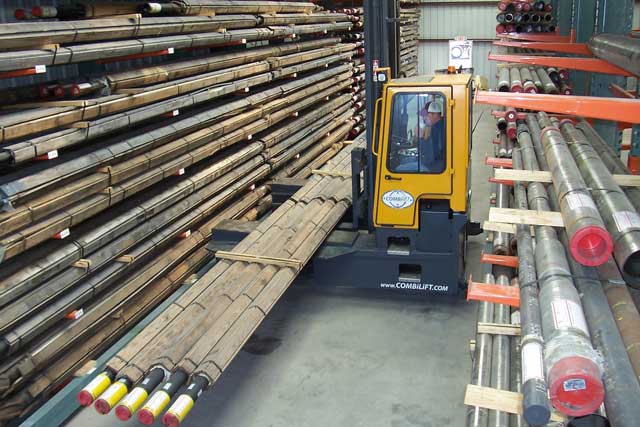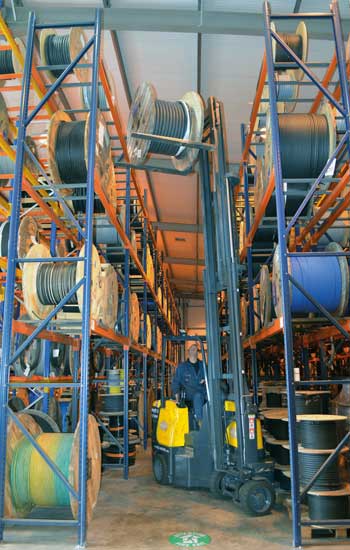
Making the best use of available space in storage areas and warehouses can lead to substantial cost savings, but the influence of materials handling equipment in the equation is not always appreciated. Martin McVicar, managing director of specialist handling equipment manufacturer Combilift, explains.
Time is money, the saying goes, but in the majority of industries this also applies to space – and the manufacturing, engineering and facility management sectors are no exception. Making the best use of available space in storage areas and warehouses can lead to substantial cost savings, avoid the need for costly relocation or the renting of additional premises in times of growth, and can also help to improve the environmental footprint by limiting outlay on overheads such as heating and lighting.
An appraisal of the materials handling equipment already in use is a good starting point. This usually means forklifts or pallet trucks. But although they may be indispensable for lifting and moving loads, they can actually be responsible for a great deal of wasted and dead space that could be put to more profitable use.
When choosing a forklift, warehouse and facilities managers often tend to focus on load handling ability, but overlook the fact that, depending on its design and capabilities, it may compromise other aspects of operations such as racking layouts and storage density. The truck’s dimensions, for example, can have a direct impact on possible aisle widths, and large areas may need to be set aside at the end of aisles for turning, depending on how manoeuvrable it is.
It is often assumed that different requirements call for different types of trucks: counterbalance models for outdoor work and offloading, reach trucks indoors, for example. But a diverse fleet also takes up space and brings with it increased costs in insurance, training and maintenance. Moving away from this combination can considerably improve efficiency. Recent developments in forklift design mean that there are now more viable options, with manufacturers such as the Irish handling specialist Combilift putting operational versatility and space saving high on the agenda.
Multidirectional technology is the key to this: sideways travel instantly solves the problems encountered by less manoeuvrable trucks in accessing narrow areas or travelling through doorways, particularly when carrying longer loads. The length of the truck itself, rather than the width of the load, determines the aisle width between racking – which can be half that needed to accommodate the limited, two-directional capabilities of reach trucks. And large areas that would otherwise be needed for manoeuvring can be reclaimed for storage.
Guided aisle operation can cut aisle widths even further. The combination of guide rails fitted to aisles and rollers on the trucks offer the additional advantages of quicker access and travel down the aisles. Once in the guided aisle the trucks steer themselves, allowing quicker and easier stock location while greatly reducing the risk of damage to goods and racking.

For companies that handle mainly palletised goods, articulated very narrow aisle forklifts such as the Aisle Master brand can increase storage capacity by up to 50% compared with the reach/counterbalance combination which they replace. Working in aisle widths of just 1.6m, Aisle Masters can exploit every inch of space, and, in common with the Combilift range, they work inside and out for maximum efficiency. They are also a much more economical option compared with traditional VNA trucks which require guidance systems and very flat floors.
Reconfiguring a current facility to operate with such space saving solutions need not be a cause for major inconvenience, as the experience of Aberdeen-based Draka illustrates. The company supplies cabling to the offshore sector. Having reached saturation point space-wise, it was considering a move to new premises. But after re-evaluating materials handling procedures, it replaced its old counterbalance and reach truck with a Combilift and an Aisle Master, which provided the ability to add more storage bays, doubling its capacity in the existing premises. Business unit manager Graham Ross says: “Changing trucks enabled us to remain on this site, avoiding the substantial costs of relocation, while improving operational efficiency and creating more space. Reconfiguring and installing the new racking took just a few days, so disruption was kept to an absolute minimum.”
So when lack of space is an issue, before you get the builders in or even think about a move, new forklifts may be the much more convenient option to increase capacity.

